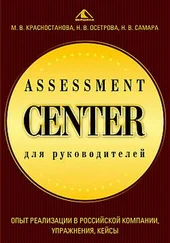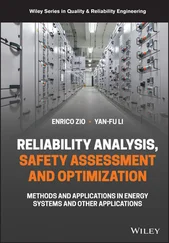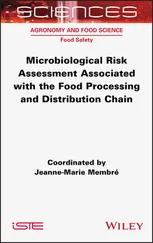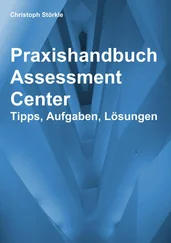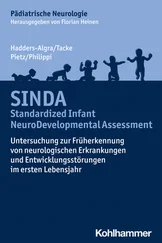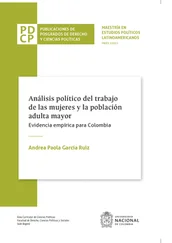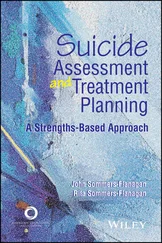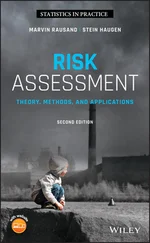Georgi Popov - Risk Assessment
Здесь есть возможность читать онлайн «Georgi Popov - Risk Assessment» — ознакомительный отрывок электронной книги совершенно бесплатно, а после прочтения отрывка купить полную версию. В некоторых случаях можно слушать аудио, скачать через торрент в формате fb2 и присутствует краткое содержание. Жанр: unrecognised, на английском языке. Описание произведения, (предисловие) а так же отзывы посетителей доступны на портале библиотеки ЛибКат.
- Название:Risk Assessment
- Автор:
- Жанр:
- Год:неизвестен
- ISBN:нет данных
- Рейтинг книги:4 / 5. Голосов: 1
-
Избранное:Добавить в избранное
- Отзывы:
-
Ваша оценка:
- 80
- 1
- 2
- 3
- 4
- 5
Risk Assessment: краткое содержание, описание и аннотация
Предлагаем к чтению аннотацию, описание, краткое содержание или предисловие (зависит от того, что написал сам автор книги «Risk Assessment»). Если вы не нашли необходимую информацию о книге — напишите в комментариях, мы постараемся отыскать её.
Explore the fundamentals of risk assessment with references to the latest standards, methodologies, and approaches Risk Assessment: A Practical Guide to Assessing Operational Risks
Risk Assessment: A Practical Guide to Assessing Operational Risks
Risk Assessment — читать онлайн ознакомительный отрывок
Ниже представлен текст книги, разбитый по страницам. Система сохранения места последней прочитанной страницы, позволяет с удобством читать онлайн бесплатно книгу «Risk Assessment», без необходимости каждый раз заново искать на чём Вы остановились. Поставьте закладку, и сможете в любой момент перейти на страницу, на которой закончили чтение.
Интервал:
Закладка:
5 Incorporate signage, procedures, training, and PPE. Where design alternatives, design changes, and engineered features and devices are not feasible and warning devices cannot adequately mitigate the severity or probability of the mishap potential caused by the hazard, incorporate signage, procedures, training, and PPE. Signage includes placards, labels, signs, and other visual graphics. Procedures and training should include appropriate warnings and cautions. Procedures may prescribe the use of PPE. For hazards assigned Catastrophic or Critical mishap severity categories, the use of signage, procedures, training, and PPE as the only risk reduction method should be avoided. 4.3.5 Reduce risk. Mitigation measures are selected.
For emphasis, it is said again that MIL‐STD 882E is an excellent educational and resource document. Its base is hazard identification and analysis and risk assessment.
1.8 OSHA Requirements
OSHA’s Rule For Process Safety Management Of Highly Hazardous Chemicals , 1910.119, issued in 1992, applies to employers at about 50 000 locations, many of which are not considered chemical companies. With respect to requirements for hazards analyses being included in standards, this OSHA standard merits a review by safety practitioners. The standard requires that:
The employer shall perform an initial hazard analysis (hazard evaluation) on processes covered by this standard. The process hazard analysis shall be appropriate to the complexity of the process and shall identify, evaluate, and control the hazards involved in the process. The employer shall use one or more of the following methodologies that are appropriate to determine and evaluate the hazards of the process being analyzed:
What‐If;
Checklist;
What‐If/Checklist;
Hazard and Operability Study (HAZOP);
Failure Modes and Effect Analysis (FMEA);
Fault Tree Analysis; or
An appropriate equivalent methodology.
Although affected employers are to make hazards analyses, the methodologies previously listed are risk assessment techniques. This author’s recollection is that commenters on the standard prior to its promulgation expressed concern over having to use probability data – of which there is little that is statistically sound. OSHA responded favorably. This appears in the preamble to the standard.
OSHA has modified the paragraph (editorial note – paragraph on consequence analysis) to indicate that it did not intend employers to conduct probabilistic risk assessments to satisfy the requirement to perform a consequence analysis.
However, all risks are not equal. Some require attention prior to others. And managements do assess and prioritize risks in their decision‐making when determining which resources are to be allocated for individual projects.
1.9 EPA Requirements
The Environmental Protection Agency (EPA) and OSHA have different legal authority with respect to accidental releases of harmful substances. The concerns at EPA center on offsite consequences: that is, harm to the public and the environment. At OSHA, the legal authority pertains to on‐site consequences.
On 19 August 1996, EPA issued rule 40 CFR Part 68, Risk Management Programs for Chemical Accidental Release Prevention . Risk Management Plans required of location managements by the rule were due by 21 June 1999. Although the provisions of the rule are extensive, only the specifications for hazards analyses will be addressed here.
Processes subject to this rule are divided into three groups, labeled by EPA as Programs 1, 2, and 3. Program levels relate to the quantities and extent of exposure to toxic and flammable chemicals. For locations qualifying for Program levels 1 and 2, those with lesser exposure, EPA will accept hazard reviews done by qualified personnel using suitable checklists.
Hazard reviews must be documented and show that problems have been addressed. In its literature, EPA comments on the desirability of using the “What If” hazard identification and analysis process. EPA also proposes the use of more involved analytical techniques if findings suggest that to be desirable.
Hazard review requirement for Program level 3 locations are more specific and extensive. But those locations that are compliant with the OSHA rule for Process Safety Management of Highly Hazardous Chemicals will need to do little new, although they do need to extend their hazards analyses to consider the probability of harm to the public or to the environment. As with OSHA, a team must complete the process hazards analyses required by EPA. One member of the team, at least, is to have experience with the process.
For American industry, EPA has obviously extended knowledge and skill requirements regarding hazard analysis techniques.
1.10 The Chemical Industry – The Extensive Body of Information
Completing hazards analyses was a common practice in the chemical industry many years before requirements for them were established by OSHA and EPA. Although the body of knowledge in the chemical industry on hazard analysis is extensive, reference will be made here to only one publication because of its particular significant.
The Center For Chemical Process Safety is a part of the American Institute of Chemical Engineers. One of its books is titled Guidelines For Hazard Evaluation Procedures, Second Edition With Worked Examples . Publication of the text by a chemically oriented group should not dissuade those who want an education in the following evaluation techniques. Their descriptions are generic.
Safety Review
Checklist Analysis
Relative Ranking
Preliminary Hazard Analysis
What‐If analysis
What‐If Checklist Analysis
Hazard and Operability Analysis
Fault Tree Analysis
Event Tree Analysis
Cause‐Consequence Analysis
Human Reliability Analysis
These techniques are dealt with broadly in the Guidelines within chapters titled “Overview of Hazard Evaluation Techniques” and “Using Hazard Evaluation Techniques.”
1.11 Conclusion
The message is clear. Including provisions requiring hazards analyses and risk assessments in safety standards and guidelines has become ordinary. It is logical to assume that this trending will continue and that safety professionals will be expected to have the knowledge and skill necessary to give counsel on applying those provisions. Emphasis on practical applications of risk assessments is key.
References
1 ANSI B11.0‐2020: Safety of Machinery. B11Standards, POB 690905, Houston, TX 77269, USA, 2020.
2 ANSI/ASSP Z10 – 2019 (2019). Occupational Health and Safety Management Systems. Park Ridge, IL: American Society of Safety Professionals.
3 ANSI/ASSP Z590.3 – 2011 (2011). American National Standard: Prevention through Design: Guidelines Addressing Occupational Hazards and Risks in Design and Redesign Processes. Park Ridge, IL: American Society of Safety Professionals (R2016).
4 ANSI/ASSP Z690 Series (2011). Risk Assessment Techniques. Park Ridge, IL: American Society of Safety Professionals.
5 ANSI/ASSP/ISO 45001 – 2018 (2018). Occupational Health and Safety Management Systems – Requirements with Guidance for Use. Park Ridge, IL: American Society of Safety Professionals.
6 ASSP Risk Assessment Institute and Committee. https://www.assp.org/advocacy/risk‐assessment‐committee
7 Bureau of Labor Statistics Reports on Occupational Fatalities, 2003 through 2016. Washington, DC: Bureau of Labor Statistics.
8 En ISO 12100‐2010 (2010). Safety of Machinery. General Principles for Design. Risk Assessment and Risk Reduction. Geneva, Switzerland: International Organization for Standardization.
Читать дальшеИнтервал:
Закладка:
Похожие книги на «Risk Assessment»
Представляем Вашему вниманию похожие книги на «Risk Assessment» списком для выбора. Мы отобрали схожую по названию и смыслу литературу в надежде предоставить читателям больше вариантов отыскать новые, интересные, ещё непрочитанные произведения.
Обсуждение, отзывы о книге «Risk Assessment» и просто собственные мнения читателей. Оставьте ваши комментарии, напишите, что Вы думаете о произведении, его смысле или главных героях. Укажите что конкретно понравилось, а что нет, и почему Вы так считаете.

